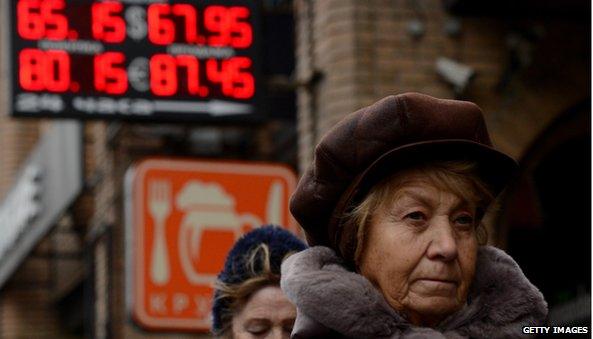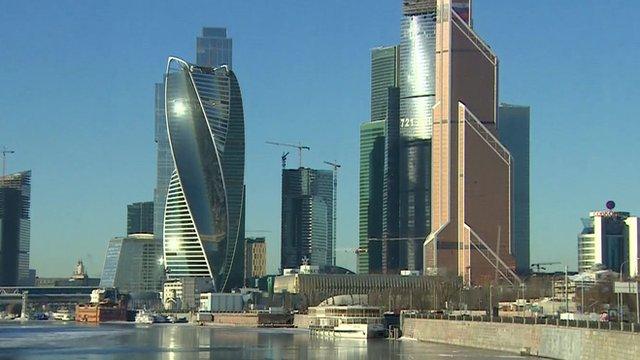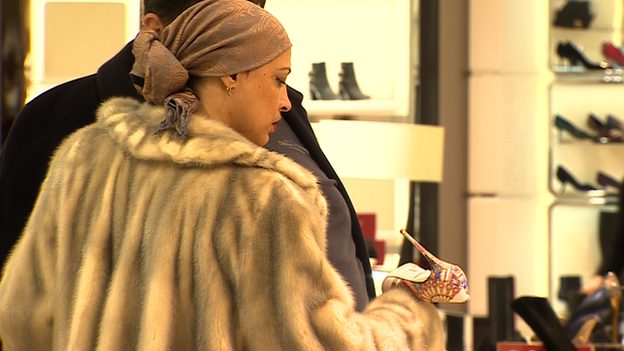Russia cuts interest rates as rouble crisis eases
- Published

Russia's central bank increased interest rates last year to combat the rapid decline of the rouble
Russia's central bank has cut its key interest rate by one percentage point to 14%, as concerns over inflation recede as Russia's economy falters.
The move, which was widely expected, comes as the rouble stabilises following its radical 46% decline in 2014.
That drop prompted the bank to increase rates up to 17% in an effort to halt the plunge.
The rate rise strengthened the rouble against the dollar.
In January, Russia's central bank surprisingly cut rates from 17% to 15%.
Interest rates were increased last year to encourage saving rather than spending after the currency's plummeting value prompted some Russians to snap up foreign goods in case its value fell still further.
Demand for goods during that spree allowed shopkeepers to raise prices, prompting high inflation.
Although inflation still remains high - February's reading showed that prices were increasing by an annualised rate of 16.7% - economists expect that depressed economic conditions, including rising unemployment, will lead to decreased demand and lower prices.
Russia's economy has been hit hard by the declining oil price as well as the impact of Western sanctions of its involvement in Ukraine.

Analysis: Andrew Walker, economics correspondent
Russia's economic problems are pulling in opposite directions in the way they affect central bank policy decisions.
Painfully high inflation was the bank's preoccupation at the end of last year - the result of the collapse of the value of the rouble - and it was the reason for the very sharp rate rise late last year. Although inflation is still very high (16.7%) the bank says it will slow and even hit the 4% target in 2017.
There has certainly been some relief from the underlying cause. The rouble has been reasonably stable for a few weeks and is well above its lows.
So the central bank is shifting its focus to the weakness of the economy and today's rate cut is the second step towards unwinding the earlier dramatic hike.
It will want to go further with the rate cuts provided inflation doesn't resume its rise.

- Published24 February 2015
- Published24 February 2015

- Published5 February 2015

- Published17 December 2014
